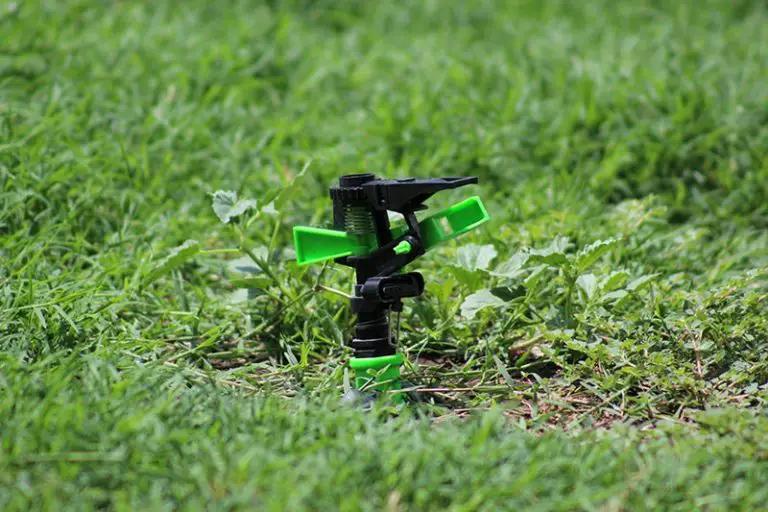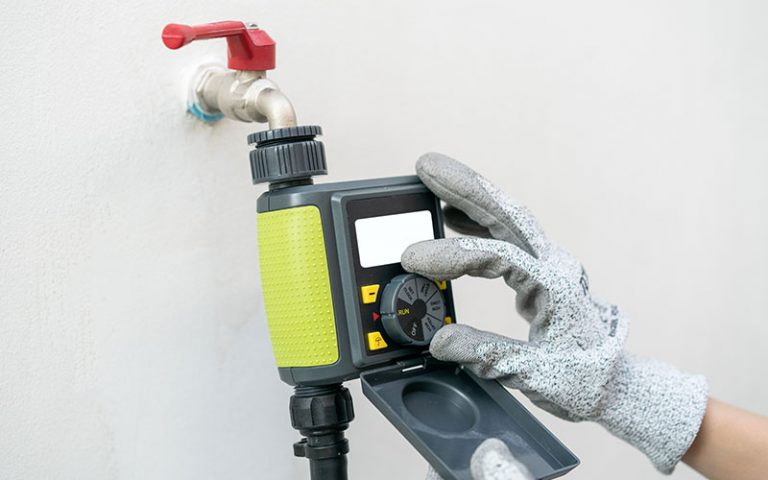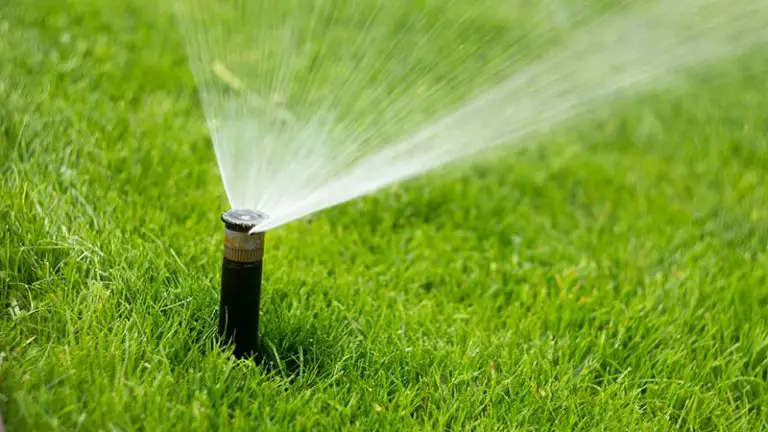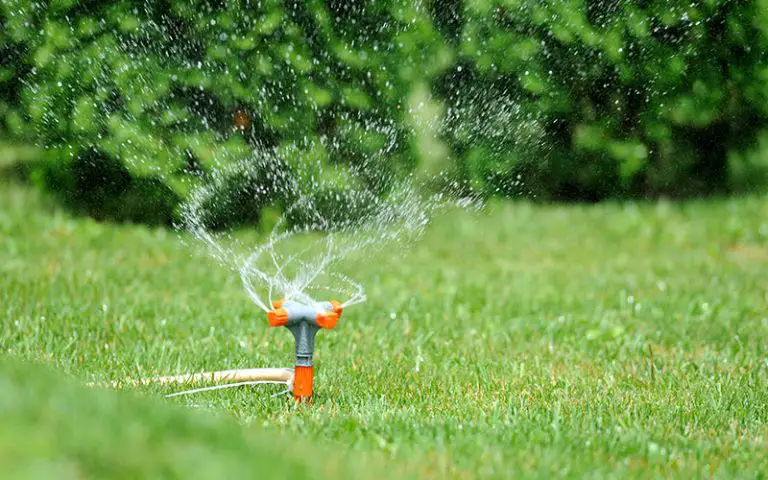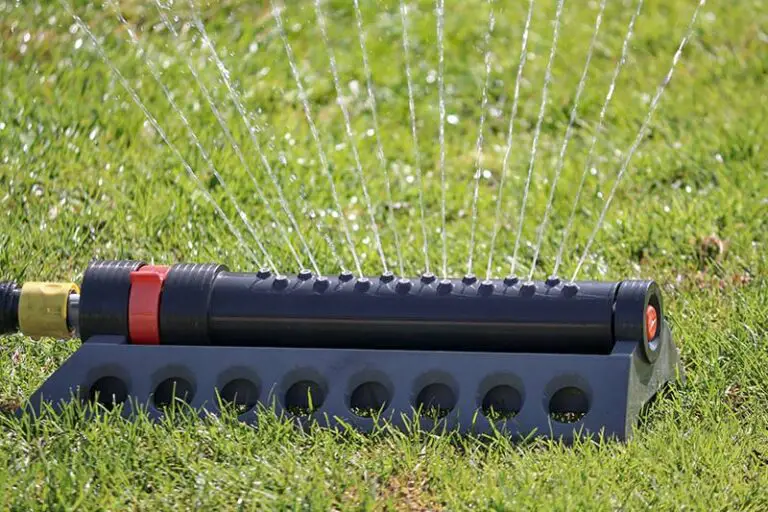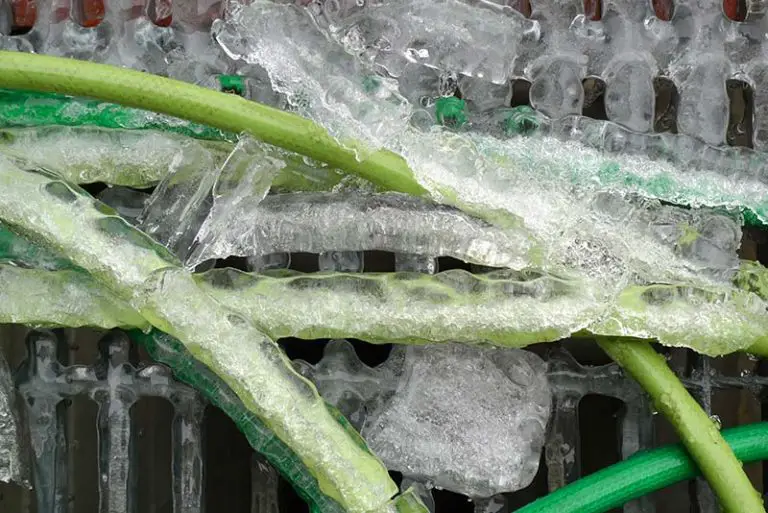How Much Does a Lawn Sprinkler System Cost?
Sprinkler systems are useful tools for maintaining a garden and reducing time spent doing menial tasks such as watering grass and other plants- especially during the height of summer when the heat can be oftentimes unbearable.
Lawn sprinklers can range in price from anywhere between $1,500 to $3,500. This would mean that the average lawn sprinkler system should cost around $2,500. There are, however, multiple factors that can affect the price of your sprinkler system.
When looking to purchase a sprinkler system, the cost may be off putting. Sprinkler systems can be fairly invasive to install and may require contractors, which hikes the price up a lot. To help you find the best deal, you should consider what type of sprinkler system you want, how large your lawn is, how often the system will be used and what kind of sprinklers you want attached.
What are the Different Types of Irrigation Systems?
When investing in a lawn sprinkler system, there are different types available to purchase which each have their own pros and cons. Some systems are cheaper, whilst others are more expensive. Their differences may be cosmetic, differences in practicality or differences in installation and maintenance.
Inground Sprinkler Systems
Inground sprinkler systems may be the most recognizable and iconic of the types of irrigation systems available for homeowners. These systems rely on pipes below the lawn to carry water to the sprinkler heads that reside above ground. This system is popular due to its invisibility, and easy maintenance.
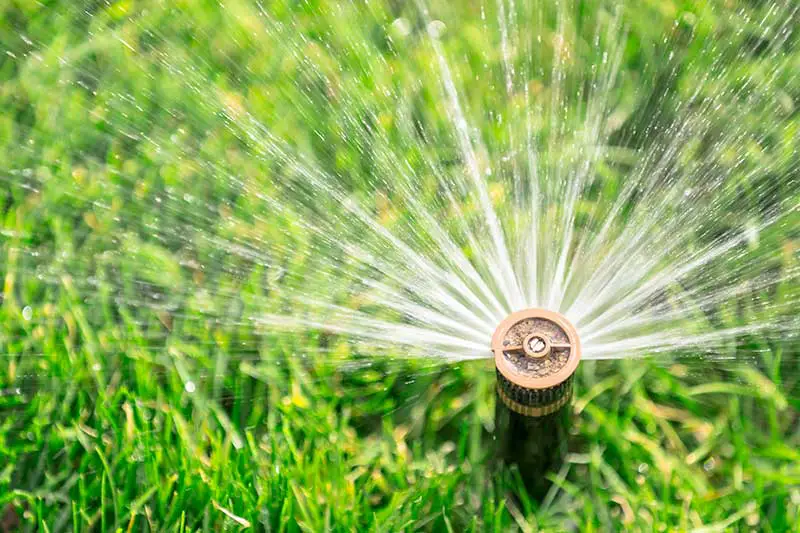
Above Ground Sprinkler Systems
Above ground sprinkler systems are the easiest systems to install and, as a result, are often the cheapest too. These systems can either be installed professionally or can be a DIY job which may require some time to complete. These systems rely on rubber hoses left above ground to carry water to the sprinkler heads.
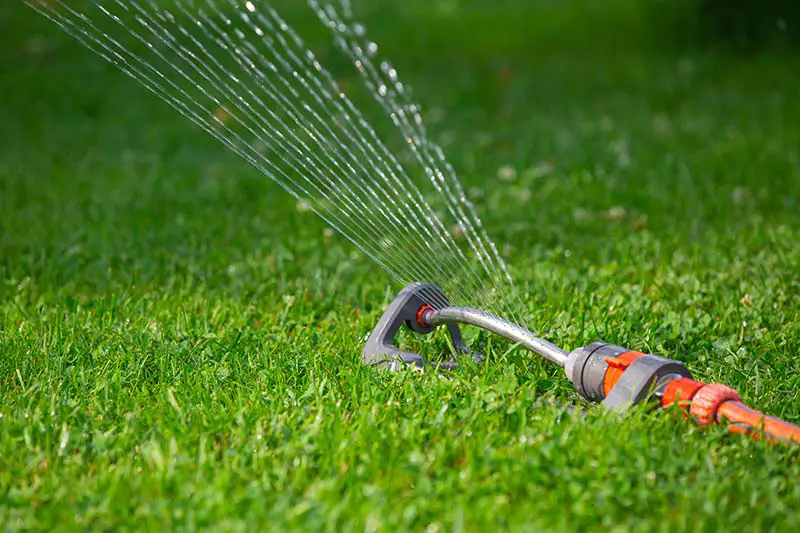
Drip Irrigation
Drip irrigation is usually used for specific types of gardens, as it delivers water differently than other irrigation systems. Drip irrigation is similar to above ground systems in that it is made up of tubing placed at the base of specific flowers or plants. It doesn’t, however, feature sprinkler heads and the water it produces is dripped straight from the tube, leaving it to slowly water the plants it’s wrapped around. This system is often used in conjunction with another system. The most popular form of drip irrigation is that of a soaker hose, which can also conveniently be hooked up to another irrigation system such as an above ground or inground one.
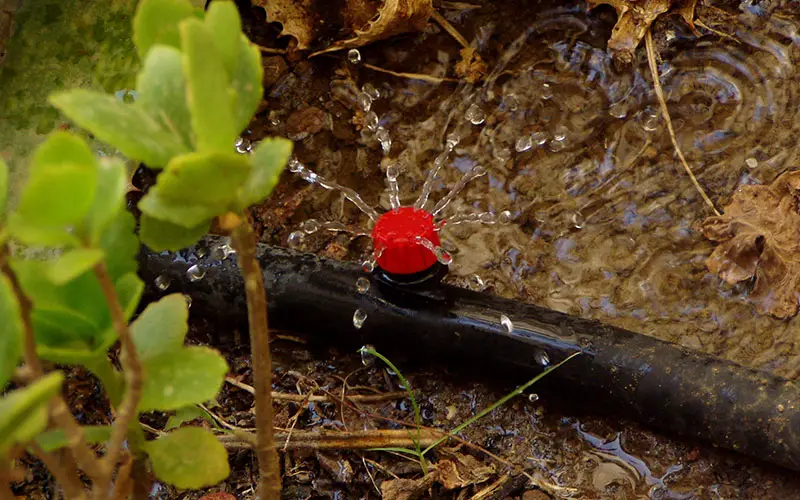
Automatic Sprinkler Systems
Automatic sprinkler systems can be any of the aforementioned systems, albeit with a controller that will automatically turn them on and off. These control boxes can range in price from anywhere between $10 to $400 depending on their quality and features. They may need to be professionally installed to ensure that they work correctly with your sprinkler system.
Rotor Irrigation Systems
Rotor irrigation systems are usually reserved for very large areas which need to be covered, although they work nearly identically to other inground systems. The main difference is the sheer size of these systems, and also how the sprinklers themselves work. The sprinklers themselves expel water in a spray-like pattern, with the densest portion of the water being aimed whichever way the sprinkler is facing. They essentially line the properties edges, and spray inward to cover the grass.
What are the Different Types of Sprinkler Controllers?
As previously mentioned, sprinkler controllers can add a lot more value to a sprinkler system due to the abilities that they possess. Controllers come with different benefits and can have many different uses which can improve your sprinkler’s performance and reduce unnecessary water waste. Knowing what settings you want your controller to have available will help you choose the correct controller for your irrigation system.
Mechanical Controllers
Mechanical controllers are easy to use and are generally on the cheaper end of the spectrum. They are manually operated, easy to understand but are less likely to have certain features that digital controllers usually have.
Solid State Digital Controllers
Solid state digital controllers are on the high end of quality sprinkler controllers. These controllers offer a full digital display and have the ability to automatically make changes to your sprinkler system’s schedule throughout the year. Digital controllers can sometimes hook up to the wifi and can predict weather patterns. These are great when figuring out how long sprinklers should run for.
Different Sprinkler Controller Features:
Each different sprinkler controller will have its own features. Some of these features will be more useful than others depending on your yard, so knowing which ones are necessary and which ones aren’t is important when planning to purchase an irrigation system.
Clock and Calendar
The clock and calendar settings on the controller are used for programming watering times and cycles. They’re best adjusted seasonally to ensure that no water goes to waste. Most controllers have this function available.
Station Omission
This feature helps you control which sprinkler system stations will turn on and which ones won’t. This is ideal if you are constantly changing your lawn’s landscaping or changing the layout around.
Rain Sensor
Rain sensors will automatically shut an irrigation system off if it’s raining or will prevent it from switching on if it has recently rained. Controllers with this feature are useful to have in places where it frequently rains, or during winter months as it serves a part in winterization.
Manual Start and Master Switch
These features are available to manually override the sprinkler system to prevent the system from turning on or turning off. This can be used for maintenance purposes or just in case your preferences change during a cycle.
Battery Backup
The battery backup is part of the system which will ensure that the system can run in the event of a power outage or issue with the main power supply.
Delay
The delay function can ensure that valves are fully closed in one zone before opening valves in other zones. This can reduce the risk of any damage to the valves and regulate the speed and pressure of the water within the system.
Different Types of Sprinkler Heads
Knowing the different kinds of sprinkler heads can also help you decide which ones are best suited to your garden. Certain sprinkler heads have their own pros and cons and each one is built for specific garden sizes and shapes.
Here you can read more about different types of lawn sprinklers.
Benefits of a Sprinkler System
Sprinkler systems can bring a lot of benefits to a garden. They can remove the need for laborious watering of grass during summer months, leaving you with more time to do other tasks.
Asides from being able to keep your lawn looking fresh and green, irrigation systems can also reduce waste water and help you save on your energy bills.
They also improve the quality of your plant’s lives by improving their growth, preserving soil nutrients and reducing weed growth within the garden.
Sprinkler systems can easily pay themselves off if installed in a house which will be eventually sold. They add value to a home – depending on the type of system that is installed – and will increase curb appeal as a result.
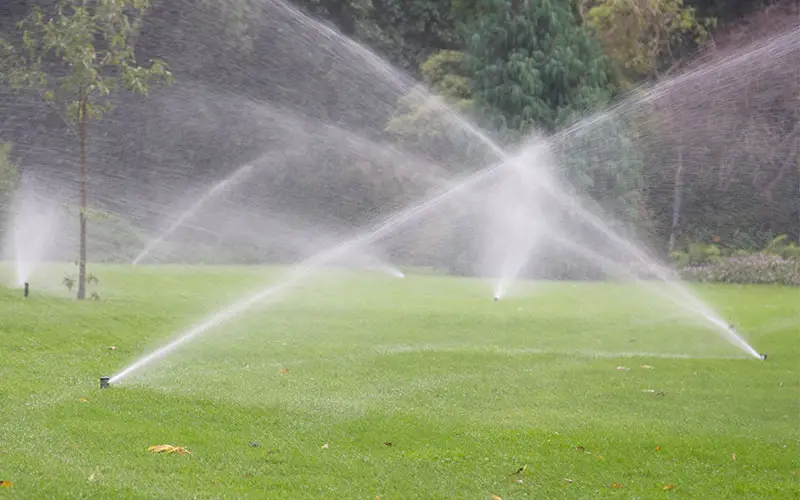
Do I Need a Sprinkler System?
A sprinkler system has many personal benefits. Most notably is the time it saves as grass will not need to be manually watered. Sprinkler systems are especially useful if you have a busy lifestyle, want your garden to be neat and well maintained, or just don’t want to manually water the grass in the heat of summer.
When Should I Install a Sprinkler System?
Whilst there’s no wrong time to install a sprinkler system, there are certain times during the year that are better than others due to the climate.
Fall is often suspected as being the best time of year to install a sprinkler system as the weather is generally still mild and it is easier to install an outdoor fixture when it isn’t the heat of summer. If installing an inground system, the ground may also be easier to dig due to grass usually being a little worse for wear after the lack of watering it would have suffered during the previous months. Of course – your grass looking a little worse for wear isn’t going to be an issue once your system is successfully installed and running!
Sprinkler System Installation Costs
Many factors go into choosing and designing an irrigation system which can impact the cost of it. Some of these factors include the sprinkler heads you want to use, the size of the system, the type of system, the controller and whether you wish to install it yourself or pay for a professional company to do it. In addition to this, your zip code may also affect the pricing of your system as labor costs may be higher in certain areas than others.
The best thing to do is estimate based on the general pricing of irrigation systems per acre and consider costs of add-ons and features which may influence the price further. The following prices also include the price of labor:
| Above Ground Sprinkler System | In ground Sprinkler System | Drip Irrigation Sprinkler System | |
| Starting Price | $1,500 Per acre | $10,000 Per Acre | $1,500 Per Acre |
| Higher Price | $2,000 Per acre | $13,000 Per Acre | $2,500 Per Acre |
Controller boxes are often purchased and installed separately and can add a significant amount of money onto your system if you are purchasing a high-end one. The cost of a controller box can be anywhere from $10-$400 depending on features available on it.
The sprinkler heads you choose can also make an impact on how much money you’ll be spending on your irrigation system. The best type of sprinkler head you can purchase can vary greatly depending on the size and shape of your yard. The best sprinklers for large lawns are significantly different from the best sprinklers for small lawns.
Irrigation systems are made up of what are known as zones. These zones are each additional pipe added onto the structure, and each zone has a certain amount of sprinkler heads depending on how large the structure is and what the water pressure is like. The amount of zones are determined by the amount of valves needed to open them up and close them off. For instance, a sprinkler system that has seven valves will have seven zones. The more zones you have added to your system, the more expensive it will become, as each zone is an additional amount of material and labor used to install it. Each additional zone could add up to $500- $1000 extra onto your initial price.
Speaking of water pressure, if your water pressure outdoors is too low to maintain a sprinkler system, a booster may need to be installed which may also add additional costs on top of what has already been spent. These boosters can cost anything from $200-$400 each. If your water pressure is generally quite high, it may dip once the sprinkler system has been installed. It is, thankfully, a fairly easy process to increase water pressure to a sprinkler system.
How to Keep Cost Down
With so many different factors and variables which can affect the cost of a sprinkler system, it’s easy to begin thinking of ways to cut corners and find the most affordable deal.
When investing in a sprinkler system, consider what features you can and can’t live without.
Some features, particularly those pertaining to control boxes, can be easily dismissed as nonessential to the rest of the system. For example, automatic control boxes may relieve some duties, but are much more expensive than manual ones, which only take a second to turn on and off.
Thinking wisely about the features you wish to have included with your system is where the prices can change drastically. In addition to the control box, smaller costs can be saved by being selective with sprinkler heads, and even the faucet bib which the system will attach to.
In addition to this, considering the aesthetics of your system will help you decide which one is best for your garden. Whilst an above ground system may not be too visually appealing, it will save you money due to the less invasive methods used to install it. A small lawn might even just require a single oscillating sprinkler and a good garden hose to keep it watered during the summer.
How you maintain your sprinkler system can also help you avoid maintenance costs in the future.
DIY Sprinkler System
It is possible to cut laboring costs completely by installing your own sprinkler system. SOme hardware stores even offer DIY sprinkler system kits for people who are committed to installing their own system. If you have access to the materials and tools needed, it’s also possible to create a system from scratch, which may require some more technical skill. A full guide to DIY sprinkler systems can be found on How to Design a Lawn Sprinkler System.
Making and installing your own sprinkler system is a rewarding process, and helps cut the cost of installation. The only downsides however, are the added time it will take and the higher likelihood that something will go wrong.
The materials necessary for a sprinkler system are:
- Sprinkler heads
- Valves
- Valve boxes
- Backflow preventer
- PVC piping
- PVC fittings
- Drains
- Wiring
- Tubing/ risers
- Controller box/ timer.
Irrigation System Maintenance
Whilst sprinkler systems can make lives easier by providing a service that is happily forgotten about, they still require occasional maintenance to ensure that they are running correctly and won’t succumb to the elements.
Being aware of some of the maintenance tasks that need to be undertaken when in possession of an irrigation system before you get one can help you prepare for when it’s installed.
Cleaning Sprinkler Heads
Regardless of what type of system you opt for, the need to clean sprinkler heads is one common denominator that they have. This should take place seasonally, lest the sprinkler heads become clogged and may need to be more extensively cleaned or, worst case scenario, replaced due to damage.
Adjusting Sprinkler Heads
Every now and then, a sprinkler head will be bumped or kicked and will need to be readjusted to ensure that it’s watering the correct part of the grass.
Winterizing
Winterizing your sprinkler system should be done yearly, just before cold weather begins to settle in. Winterizing involves draining your sprinkler system of water, capping each of the sprinkler heads, and cutting the water supply to the system. Freezing pipes can lead to damage, as water expands when it freezes, thus building up pressure within the system.
Protecting Sprinkler Heads
Sprinkler heads should be protected whenever landscaping is taking place or they will be exposed to less-than-ideal elements such as flooding, snow or high winds. Protecting your sprinkler heads is something that should be done to help them remain durable and last as long as possible.
Avoiding Damage to Sprinkler Lines
The type of damage which may occur to your sprinkler lines depends on whether they’re located above or below the ground. Above ground sprinkler lines are more likely to be damaged by lawn equipment such as lawnmowers, strimmers and rakes. Alternatively, however, in ground sprinkler lines are more likely to be damaged by digging. Make sure you obtain a line map so you can locate sprinkler lines and avoid any damage to them.
Avoiding Standing Water
Standing water can lead to issues in your yard beyond sprinkler issues, and can eventually lead to issues preventing your sprinkler from turning on. Whilst standing water is best avoided in your yard, however, sprinkler systems can also be a cause of it, depending on how well maintained they are. A poorly maintained sprinkler system may leak, gather water from poorly adjusted heads, or may use too much water.
Final Thoughts
Sprinkler systems offer a ton of benefits for your garden and add value to your home. Their major downside is their price, as many systems are expensive to build and install. Considering various factors when looking at potential sprinkler systems and thinking about which features are necessary for you can help you save some money when installing and building the system. With that being said, don’t sacrifice too much quality, as a low quality system could end up costing more money due to constant repairs, maintenance or replacements in the long run. Ideally, a properly installed sprinkler system will help you save money and time in the long run, by reducing waste water and giving you more time to spend doing what you enjoy.

